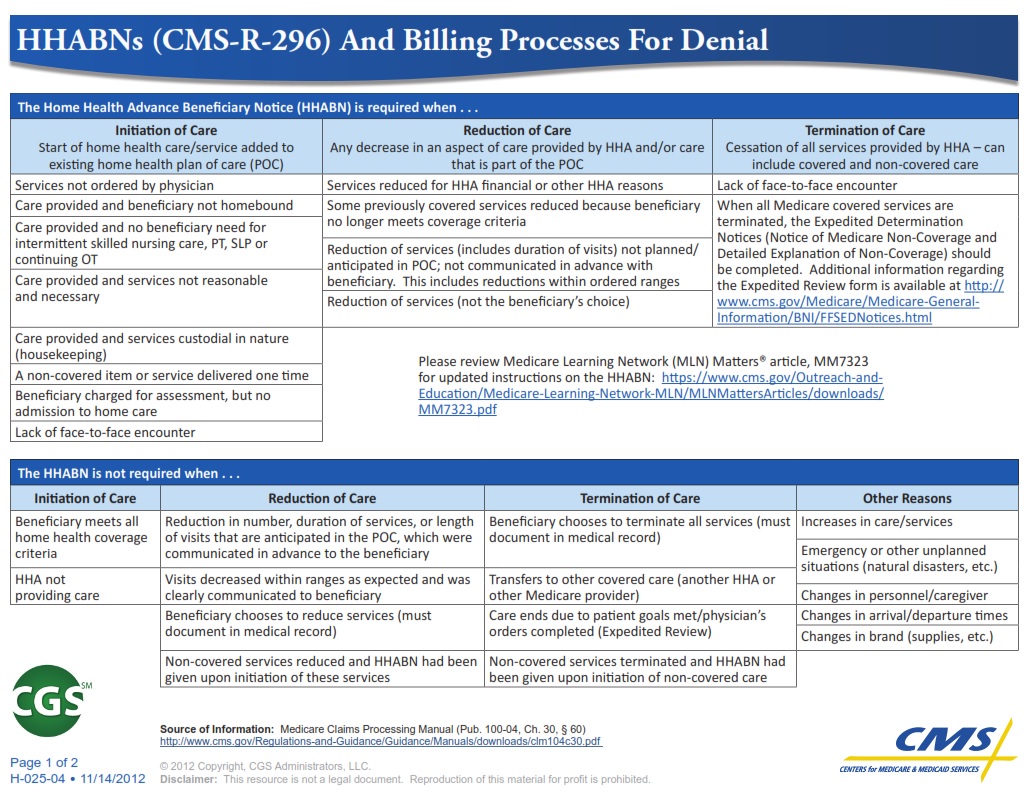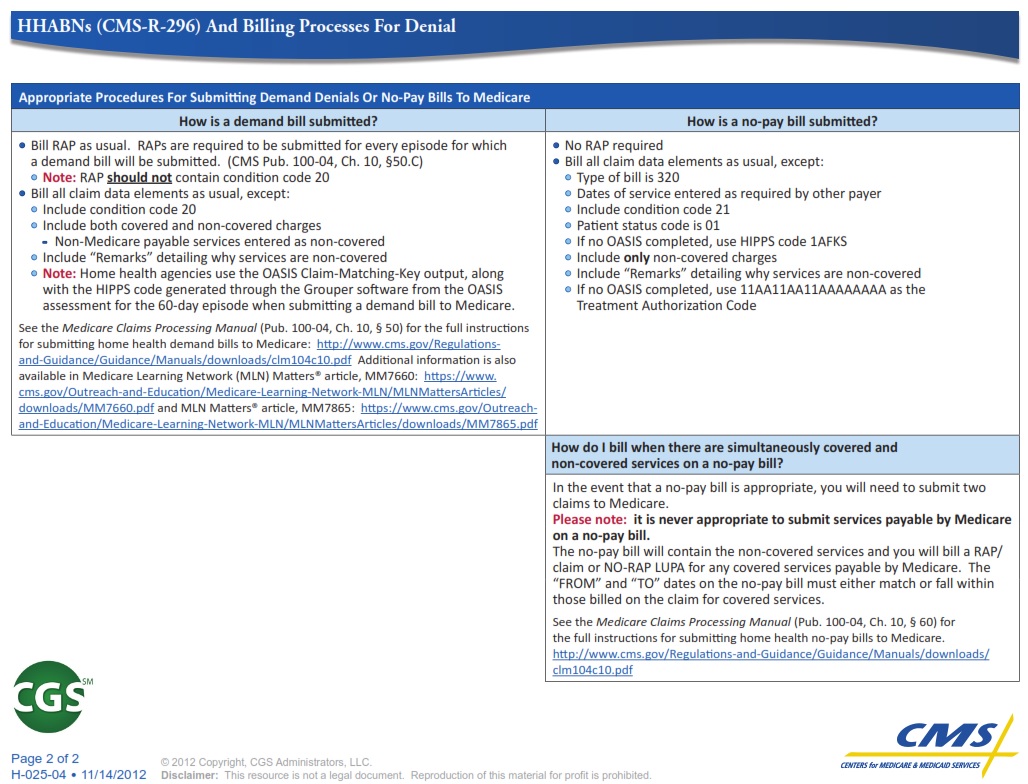CMSFORM.ORG – CMS R-296 – HOME HEALTH ADVANCE BENEFICIARY NOTICE – In the ever-evolving landscape of healthcare regulations, one particular acronym has been causing a stir among home health providers and Medicare beneficiaries alike – CMS R-296. At the heart of this regulation lies the Home Health Advance Beneficiary Notice (HHABN), a crucial document that serves as a bridge between patients and providers in the realm of home health services. As the healthcare industry continues to navigate complex reimbursement rules and compliance requirements, understanding the intricacies of CMS R-296 and its implications for both parties is essential for ensuring seamless care delivery and financial transparency.
Imagine receiving personalized care in the comfort of your own home, only to be faced with unexpected costs or uncertainties about coverage. The HHABN under CMS R-296 aims to address these concerns head-on, empowering patients with knowledge about their rights and potential financial responsibilities before services are rendered. Join us as we delve into the significance of this vital notice, unraveling its nuances, impact on patient-provider relationships, and how it paves the way for informed decision-making in home health settings.
Download CMS R-296 – HOME HEALTH ADVANCE BENEFICIARY NOTICE
| Form Number | CMS R-296 |
| Form Title | HOME HEALTH ADVANCE BENEFICIARY NOTICE |
| Published | 2009-08-01 |
| O.M.B. | 0938-0781 |
| File Size | 218 KB |
CMS R-296 - HOME HEALTH ADVANCE BENEFICIARY NOTICE (1492 downloads )
What is a CMS R-296?
The CMS R-296 form, also known as the Home Health Advance Beneficiary Notice (HHABN), plays a crucial role in informing Medicare beneficiaries of their financial responsibility for home health services. This form is issued by home health agencies to notify patients about situations where Medicare may not cover all or part of the services provided. By understanding the contents of the HHABN, patients can make informed decisions regarding their care and finances.
One notable aspect of the CMS R-296 form is its emphasis on transparency and patient empowerment. It allows beneficiaries to have a clear understanding of their rights and responsibilities when it comes to accessing home health services under Medicare. Additionally, the HHABN serves as a tool for communication between providers and patients, fostering a collaborative approach to care that prioritizes mutual understanding and informed decision-making. By promoting transparency and accountability in healthcare delivery, the CMS R-296 form helps enhance patient-centered care in the realm of home health services.
Where Can I Find a CMS R-296?
If you are in search of a CMS R-296 form for Home Health Advance Beneficiary Notice, there are several places where you can find it. One option is to visit the official website of the Centers for Medicare & Medicaid Services (CMS), where they provide access to all standard forms including the CMS R-296. You can also contact your local Medicare Administrative Contractor (MAC) for assistance in obtaining the form.
Another reliable source for finding the CMS R-296 form is through healthcare providers and agencies that specialize in home health services. They often have direct access to these forms and can provide you with the necessary documentation. Additionally, various online platforms may offer downloadable versions of the form, ensuring easy access for those in need of it. By utilizing these resources effectively, you can obtain the CMS R-296 form efficiently and proceed with any necessary administrative tasks related to home health care services.
CMS R-296 – HOME HEALTH ADVANCE BENEFICIARY NOTICE
CMS R-296, also known as the Home Health Advance Beneficiary Notice (HHABN), plays a crucial role in empowering patients with information and choice. This notice is designed to inform Medicare beneficiaries about their rights and options regarding home health services, ensuring transparency and informed decision-making. By offering clarity on coverage limitations or potential denial reasons, the HHABN enables patients to make informed choices about their care.
Understanding the HHABN can help beneficiaries navigate the complexities of the healthcare system with confidence. It serves as a valuable tool for promoting patient autonomy and involvement in their care decisions. With clear messaging and detailed explanations provided through the HHABN, patients can actively participate in discussions about their treatment plans, enhancing overall satisfaction and outcomes within the home health setting.

